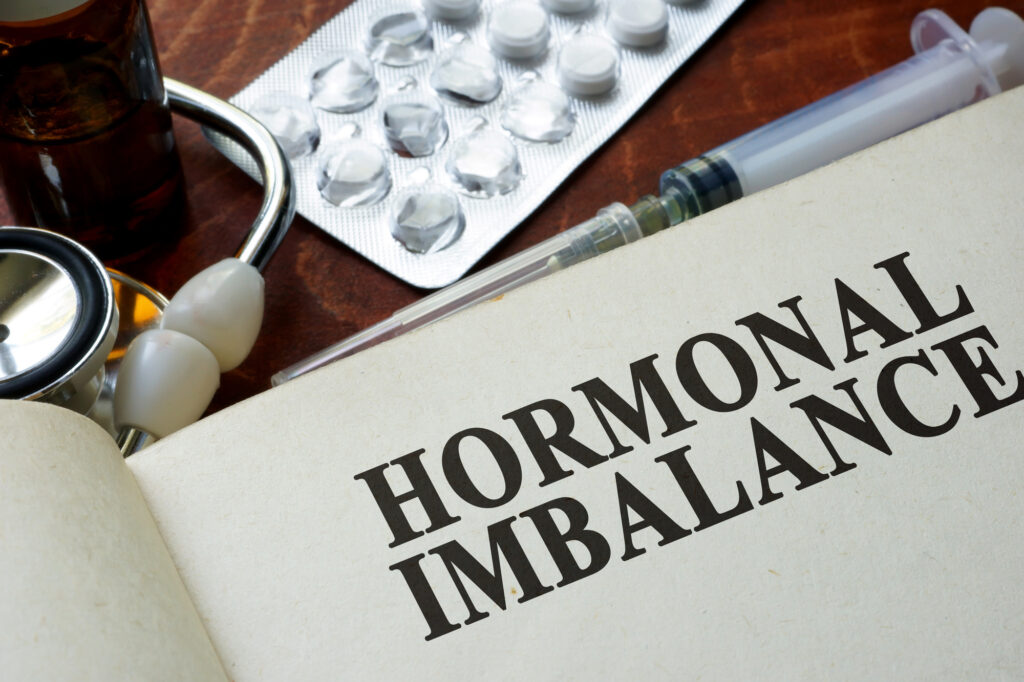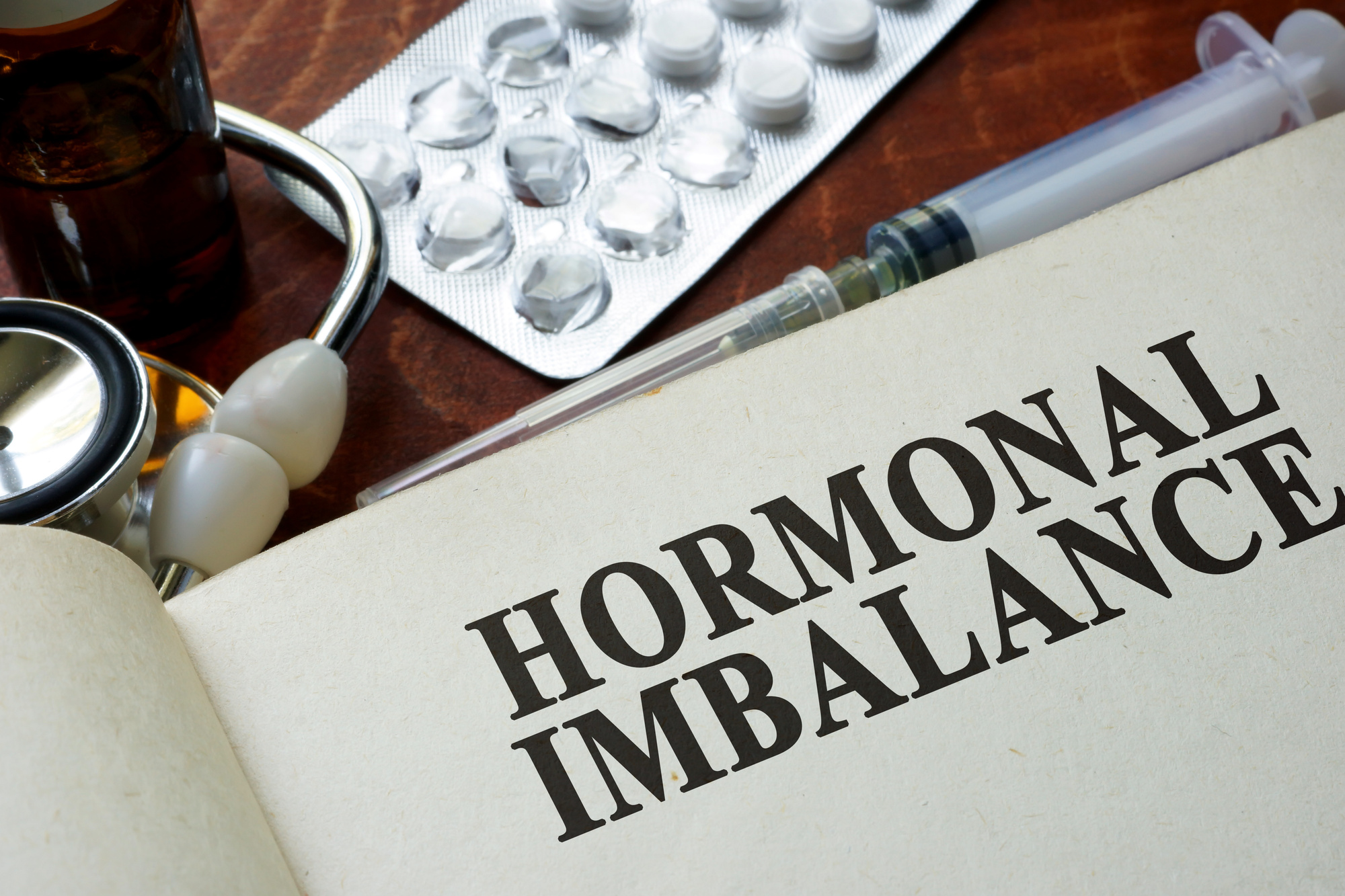Estrogen dominance is a condition characterized by imbalance between estrogen and progesterone levels in the body. These hormonal imbalance has been implicated as a significant factor in various health issues, including thyroid related disorders and uterine fibroids. Understanding the complexities of estrogen dominance and its impact on different parameters is crucial for comprehensive health awareness.
Introduction to estrogen Dominance:
Estrogen, a key hormone in both men and women, plays a vital role in regulating various physiological processes. However, when the balance between estrogen and Progesterone is disrupted, estrogen dominance can occur. This imbalance has been linked to a range of health issues extending beyond reproductive concerns.
Estrogen Dominance and Thyroid Related disorders:
The intricate interplay between estrogen and thyroid hormones is crucial for maintaining metabolic equilibrium. Estrogen dominance can interfere with thyroid function contributing to disorder such as hypothyroidism or Hashimoto’s thyroiditis. Understanding the impact of estrogen on thyroid hormones sheds light on the intricate connections between the endocrine system and the potential repercussions of hormonal imbalances.

Uterine Fibroids and estrogen Dominance:
Uterine fibroids, non cancerous growths in the uterus are influenced by hormonal fluctuations, particularly elevated estrogen levels. Estrogen dominance has been identified as a key factor in the development and growth of uterine fibroids, exploring the relationship between estrogen dominance and uterine fibroids provides insights into the mechanisms driving these common gynecological conditions.
Impact on Reproductive Health:
Estrogen dominance can significantly affect reproductive health beyond uterine fibroids, Irregular menstrual cycles, fertility issues and changes in PMS symptoms are among the manifestations of hormonal imbalances. Examining how estrogen dominance influences these aspects of reproductive health offers a comprehensive view of its implications for individuals, especially women of childbearing age.
Metabolic and cardiovascular parameters:
Estrogen plays a role in maintaining healthy cholesterol levels and supporting cardiovascular function. Estrogen dominance, however, can disrupt this balance, potentially contributing to adverse side cardiovascular effects. Exploring the impact of estrogen dominance on metabolic and cardiovascular parameters, underscores the far-reaching consequences of hormonal imbalance on overall health.
Environmental factors and estrogen dominance:
Beyond internal factors, external elements contribute to estrogen dominance. Endocrine-disrupting chemicals found in certain plastics, pesticides and personal care products can mimic estrogen in the body, exacerbating hormonal imbalances. Investigating the environmental factors that contribute to estrogen dominance, provide a holistic understanding of its etiology.
Management and prevention:
Addressing estrogen dominance involves the multifaceted approach. Dietary changes, stress management and lifestyle modifications can play a pivotal role in restoring hormonal balance. For example,
Dietary Strategies for estrogen Dominance
Balanced Macronutrients:
Ensure a well balanced diet with adequate proteins, healthy fats and complex carbohydrates, balanced macronutrients contribute to stable blood sugar levels, preventing insulin spikes that can influence estrogen levels. Such as nuts and seeds, olive oil, avocado, coconut oil, coconut, ghee, lentils, beans, legumes pulses, sprouts and millets.
Cruciferous vegetables:
For example, Incorporate cruciferous vegetables such as broccoli, kale, cauliflower, cabbage, brussels sprouts. These vegetables contain compounds like I3C (indole-3-carbinol) that support estrogen metabolism and detoxification, promoting a healthy hormonal balance.
Fiber-rich foods:
Include fiber-rich foods like whole grains, legumes and vegetables. Fiber aids in the elimination of excess estrogen through the digestive system, preventing its reabsorption into the bloodstream.
Healthy fats:
For example, Choose sources of healthy fats, including avocado, nuts and olive oil. These fats support hormone production and help maintain healthy lipid profile.
Flax seeds:
Such as, Integrate flaxseeds into the diet as they contain lignans that can help modulate estrogen levels. Ground flax seeds can be added to smoothies, yogurt or used as a topping for salads.
Limiting Processed foods:
Incorporate whole nutrient-dance foods instead of processed and packaged foods. These ultra-processed foods often contain additives and preservatives that may disrupt hormonal balance.9
Organic Choices:
Choose organic produce and hormone free animal products when possible. Pesticides and hormones in conventionally produced foods can contribute to estrogen like effects in the body.
Lifestyle Modifications:
Regular Exercise:
Engage in regular physical activity, as exercise helps regulate hormonal balance. Both aerobic and strength-training exercises contribute to overall well-being and can aid in estrogen metabolism.
Stress management:
Practice stress-reducing techniques such as meditation, deep breathing or yoga. Chronic stress can elevate cortisol levels impacting estrogen metabolism and contributing to hormonal imbalances.
Adequate sleep:
Prioritize sufficient and quality sleep. Sleep is crucial for hormone regulation and inadequate sleep can disrupt the delicate balance between estrogen and progesterone.
Maintaining Healthy Body Weight:
Achieve and maintain a healthy body weight. Excess body fat, especially around the abdomen, can contribute to estrogen production. Additionally, Healthy weight management supports hormonal equilibrium.
Avoiding Endocrine Disruptors:
For example, Minimize exposure to endocrine disrupting chemicals found in plastics, personal care products and household items. These chemicals can mimic estrogen in the body, contributing to hormonal imbalances.
Hydration:
Stay adequately hydrated water. For example, Water supports various body functions, including the elimination of toxins and excess hormones through urine.
Supplementations and Herbs for estrogen Dominance:
Omega-3 Fatty Acids:
Consider Omega-3 fatty acid supplements as they have anti-inflammatory properties and may support hormonal balance. Such as, Flax seeds, chia seeds, pumpkin seeds, walnuts, fish oil, olive oil and salmon fish.
Vitamin D:
Ensure sufficient vitamin D levels either through sunlight exposure or supplements, vitamin D plays a role in hormonal regulation. For example, Salmon fish, egg yolks and mushrooms.
Ashwagandha:
Ashwagandha is often considered an apoptogenic herb, meaning it may help the body adapt to stress and potentially influence hormonal balance. In addition, Some studies suggested Ashwagandha may have positive effects on hormone levels, including cortisol, estrogen and testosterone.
Shatavari:
Shatavari is an herb commonly useful in traditional ayurvedic medicine and have apoptogenic properties that may support hormonal balance. Moreover, It is often useful for women’s health, particularly for conditions related to the female reproductive system.
Conclusion:
Managing estrogen dominance through dietary and lifestyle changes involves the comprehensive and personalized approach. By incorporating nutrient-dense foods, adopting healthy lifestyle habits and considering targeted supplements, individuals can work towards restoring hormonal balance naturally. It is crucial to consult with a doctor or gynecologist, especially in cases of significant hormonal imbalances to ensure a tailored and effective approach to managing estrogen dominance. To get more insights about overall well-being read my latest book, the magical ways for sparkling lifestyle.



Leave a Comment